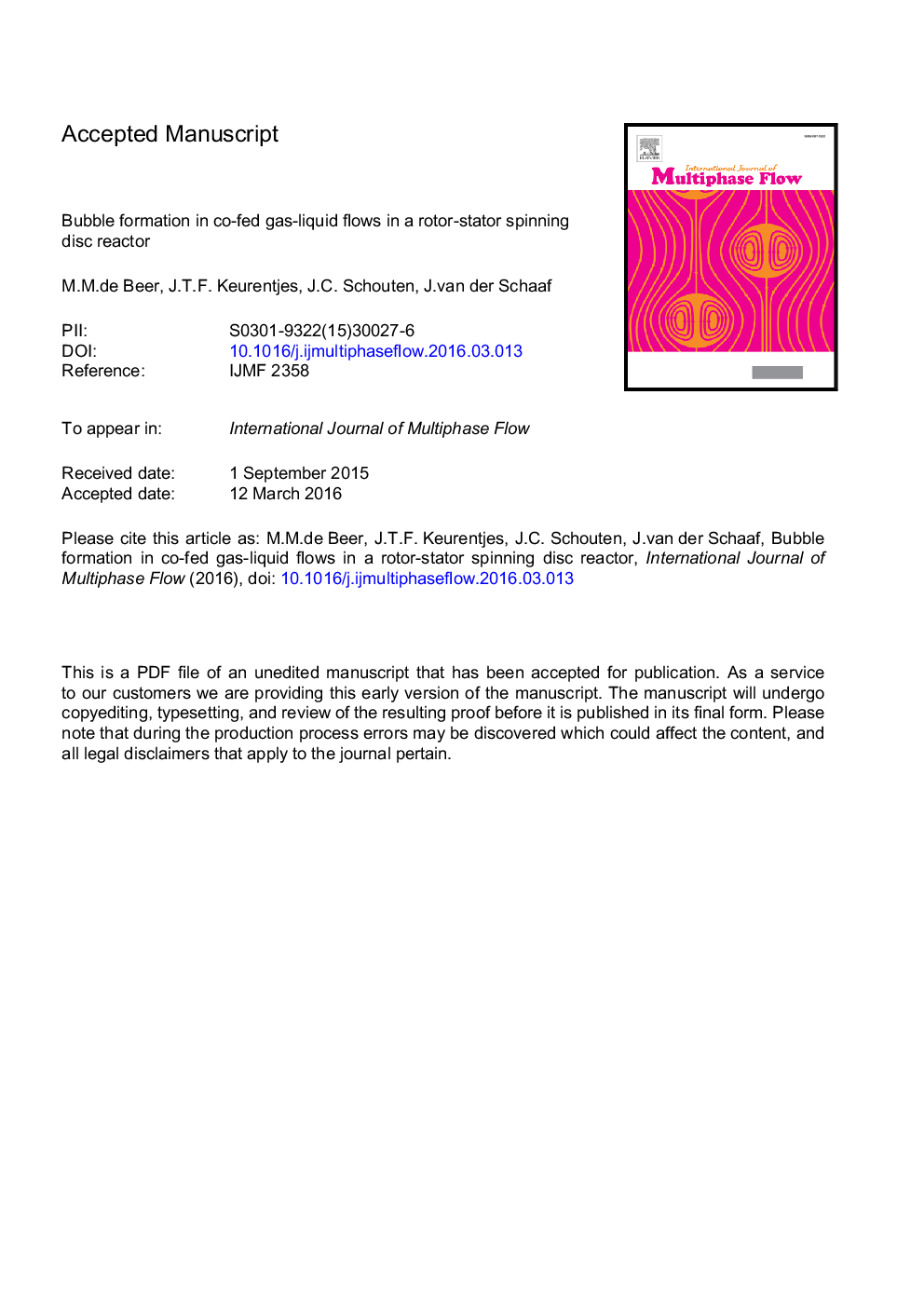| Article ID | Journal | Published Year | Pages | File Type |
|---|---|---|---|---|
| 7060291 | International Journal of Multiphase Flow | 2016 | 57 Pages |
Abstract
The gas-liquid flow in a rotor-stator spinning disc reactor, with co-feeding of gas and liquid, is studied for high gas volumetric throughflow rates and high gas/liquid volumetric flow ratios. High speed imaging and spectral analysis of pressure drop signals are employed to analyse the flow. Two mechanisms of bubble formation are observed, one due to gas overpressure leading to large irregular bubbles, and one due to liquid turbulent vortices leading to small, well-defined bubbles. The two mechanisms lead to three distinct gas dispersion regimes, distinguished by their characteristic oscillations in pressure drop. At low rotational Reynolds numbers (ReÏ < 0.4 · 106), in the gas spillover regime, the gas is dispersed as large bubbles only. Above this critical ReÏ, small bubbles are sheared off as well, thus forming a heterogeneous dispersion. At sufficiently high ReÏ, depending on the gas flow rate, the gas is homogeneously dispersed as small bubbles. The maximum gas flow that can be dispersed as small bubbles is linearly proportional to the local energy dissipation rate. The understanding of the bubble formation mechanisms and pressure signature allows prediction and detection of the prevailing hydrodynamic regime in scaled up spinning disc reactors and for different reaction fluids.
Keywords
Related Topics
Physical Sciences and Engineering
Chemical Engineering
Fluid Flow and Transfer Processes
Authors
M.M. de Beer, J.T.F. Keurentjes, J.C. Schouten, J. van der Schaaf,
